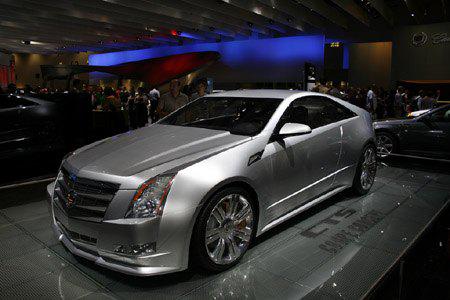Automoblog Book Garage: Pontiac Firebird: 50 years
In our book garage series this weekend, we will go back to the 1960s, where one of the most memorable parts of American history is emerging. The muscle car era is different, not only in the automotive field, but also in the entire picture of American culture.
One of the defining moments came when Pontiac Chief Engineer John Z. DeLorean, with Bill Collins and Russ Gee, bolted a 389 ci V8 onto a Tempest chassis prototype for the GTO. It took them 20 minutes to create one of the most successful GM muscle cars ever built.
Competitive Spirit
Author
Pontiac Firebird: 50 Years Gallery
Competitive Spirit
However, cross town rivals Ford were winning in the sales game with the Mustang, the brainchild of Lee Iacocca. Although a tough sell to then Ford chief Henry Ford II, the Mustang ended up a home run. In response, Pontiac entered the pony car market in 1967 with the Firebird. The car is now famed as a “greatest hit” of the muscle car years, but at the time, it was aimed squarely at the Mustang.
Eventually the top Firebird model, the Trans Am, became the pinnacle for automotive performance in the United States, carrying the muscle car banner through the 1970s and 80s.
Pontiac Firebird: 50 Years chronicles the Firebird’s legacy, from the initial attempts to capture the market in the early 1960s, through the glory days of the muscle car era, to the resurgence of performance in the 1980s.
Author
David Newhardt is one of the top automotive photographers today; a lot of the photography in this incredible book is his. He has provided photography for best-selling Motorbooks titles like Muscle: America’s Legendary Performance Cars, Corvette: Fifty Years, Mustang: Forty Years, Mopar Muscle: Fifty Years, and Shelby Mustang: Racer for the Street.
Pontiac Firebird: 50 Years will be available soon from Motorbooks or you can preorder today on Amazon.
Pontiac Firebird: 50 Years Gallery

At first glance, the Firebird’s connection to the Chevrolet Camaro was evident, as the basic body platform was shared. But Pontiac’s styling department instilled the Firebird with many traditional design cues, including the split front grille and emblems, while Pontiac Engineering slid Pontiac-unique engines under the hood.
With its deeply recessed split grille, this 1967 Firebird H.O. was recognizable as a Pontiac at first glance. The wire wheel covers were optional, and buyers had to pony up $69.51 for the pleasure of spending Saturday mornings laboriously cleaning the spokes.
Pontiac painted the 1969 Trans Am in traditional American racing colors. For decades, top-tier race cars were painted in national colors: red for Italy, silver for Germany, dark green for England. America’s colors were white with blue. From this high viewpoint, the tasteful roof stripes are fully seen.
When the 1970 Firebirds hit the showroom, they had to share space with 1969 Firebirds that hadn’t sold. Customers who set eyes on this graceful design could be excused for ignoring the older car. It’s been said that the mark of a good designer is knowing when to lift the pen; Pontiac’s stylists knew exactly when to say “enough.”
New for the entire 1975 Firebird line, including the Trans Am, was a wraparound rear window. Pontiac stylists created a front end that included the twin openings that was a traditional Pontiac visual cue.
Finished in Anniversary Solar Gold, the 1978 Gold Edition Trans Am was a very rare version of the T/A. Gold “snowflake” wheels were part of the package from the factory.
Hunkered down, and wearing the full aero kit bits in an attempt to keep it on the ground at high speed, the 1982 Banks Turbo Trans Am was surprisingly stock inside and out. Except under the hood.
The look of the fourth-generation F-body was previewed on the 1991 Trans Am GTA. From the rounded nose to the wraparound rear wing, aerodynamics were increasingly dictating the shape of the vehicle. Improving fuel economy to meet CAFE rules was of paramount importance for all auto manufacturers.
Due to its windshield angle of 68 degrees, cleaning the inside of the 1996 Trans Am’s glass posed a challenge. But that steep angle created a very slippery shape to the wind, helping increase fuel economy and performance as well as reduce interior wind noise.
Pontiac built just 360 1999 Trans Am 30th Anniversary Edition convertibles equipped with an automatic transmission. The coupe version and the convertible used different rear spoilers.
Every one of the 2002 Collector Edition Trans Ams came equipped with the desirable WS6 suspension and performance package. The flowing tape stripe motif wasused only on these T/As.
Pontiac Firebird: 50 Years by David Newhardt.
At the Automoblog Book Garage last weekend, we showed some impressive hot rods.
-
Latest
 Caddy CTS-V coupe is not dead
Caddy CTS-V coupe is not deadThe ongoing soap operas of General Motors (if not the average American automaker) continue to have more twists and turns than the deformed corkscrew. In today's show, Cadillac CTS-V Coupe plays the yo...
-
Next
 Porsche 911 Sport Classic – Ah, back to the foundations of glory
Porsche 911 Sport Classic – Ah, back to the foundations of glorySo yesterday I was very muchharshng on Porsche’s mellowas far as the Cayenne and Panamera were concerned. So today, head guy Chris decided to send me word about a new, and sadly exclusive, 911 variant...
